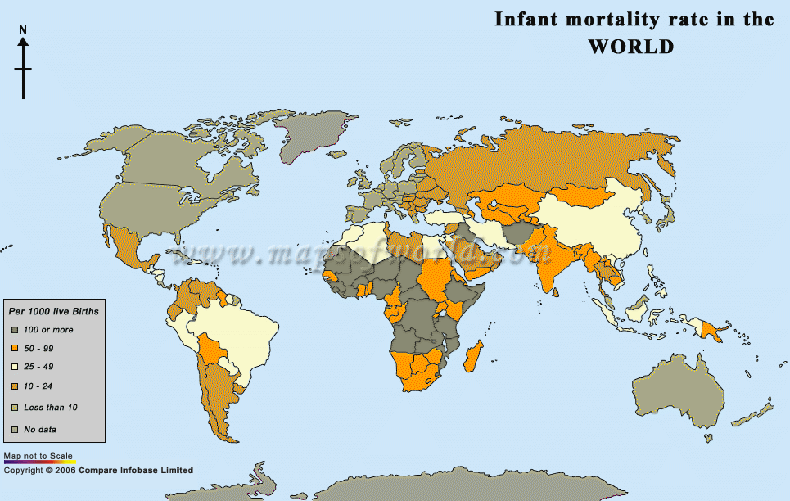Creating embryonic stem cell (ESC) lines is controversial. Destroying embryos to create a single ESC line strikes some as wasteful of human life. But what if you could take an embryo and create millions of distinct ESC lines from it?
This
Nature abstract discusses the protein
Nanog, which may allow the creation of any number of "hybrid" ESC lines-- reprogramming
adult stem cells to pluripotency. Eventually it should even be possible to reprogram adult stem cells without having to use an ESC. Here is a bit more detail in this
Bio.com newsrelease:
The Edinburgh scientists fused mouse embryonic stem cells with brain stem cells, a type of adult stem cell. They found that the addition of Nanog resulted in a massive increase in the numbers of hybrid cells, all of which behaved like embryonic stem cells. Most importantly the hybrid cells showed the capacity to make many different cell types, such as heart and gut. "This means that the genetic programme of the brain cells has been erased and replaced by the unspecialised programme of an early embryo cell" says Dr Jose Silva, first author of this study.Dr Silva adds "The effect of Nanog is remarkable. All of the hybrid cells become fully converted to embryonic stem cells. If we can figure out how Nanog does this, it may become possible to switch cell types without fusion or cloning." However, the Edinburgh team must also identify at least one other key gene. "Nanog has great power" says Professor Smith, "but it does not work in isolation, only in partnership with other genes present in embryonic stem cells". 
As an organism ages, it loses the ability to replace lost cells. At some point, cells lose the ability to replicate, but even before that point they show signs of incompetence in gene expression. This
Nature abstract discusses research that reveals this increased variation in gene expression of aging myocytes:
One possible mechanism by which increased DNA damage could lead to cellular degeneration and death is by stochastic deregulation of gene expression. Here we directly test for increased transcriptional noise in aged tissue by dissociating single cardiomyocytes from fresh heart samples of both young and old mice, followed by global mRNA amplification and quantification of mRNA levels in a panel of housekeeping and heart-specific genes. Although gene expression levels already varied among cardiomyocytes from young heart, this heterogeneity was significantly elevated at old age. We had demonstrated previously an increased load of genome rearrangements and other mutations in the heart of aged mice3, 4.This means that in order to perform
DNA repair on senescent cells, it will be necessary to have templates of relatively young cells of that type. At some point it would be necessary to replace the old cells with new cells--much like replacing the rotten planking of an old wooden boat with new planking. It is still the same boat, but the new planking gives it a new life. Stem cells--tissue specific programmed ASC's from preserved ESC's--would provide the replacement cells.
That is why drugs such as the recent Korean discovery
CGK-733 will not work as life extenders. They only extend the replication lifetime of cells--they do not keep the ageing cells young. The senescent incompetence of gene expression is still present, along with increasing risks of cancerous transformation.
Finally, what good is a body made of young vibrant cells, if the mind is asleep or deranged? This
Eurekalert newsrelease discusses the discovery of Neuropeptide-S, a new brain protein that promises to help wake the walking sleepers.
Neuropeptide S (NPS), so named by Rainer K. Reinscheid, Ph.D., assistant professor, Program in Pharmaceutical Sciences, University of California, Irvine, is produced by a small cluster of cells in the brainstem, yet its specialized receptors are found in several areas of the brain, including those that are associated with the regulation of arousal, sleep and wakefulness, anxiety, appetite, learning and memory. Dr. Reinscheid and his colleagues reported finding the new neuropeptide just last year and described animal studies showing how binding of NPS to its receptors on the surfaces of neurons promotes strong arousal, suppresses all phases of sleep and lessens anxiety in stressful or unfamiliar situations.Now, at ICN 2006, Dr. Reinscheid's group reports how NPS also can reduce the biochemical and behavioral symptoms of schizophrenia in an established animal model for this mental illness that affects some 2 million Americans. Animals pretreated with NPS before receiving a drug that normally induces psychotic-like behaviors did not develop the signature behavioral symptoms and neurochemical features of schizophrenia, reported Naoe Okamura, M.D., Ph.D., who is a co-worker of Dr. Reinscheid at the University of California, Irvine."Although preliminary, our animal studies indicate the NPS receptor should be explored as a target for the development of novel antipsychotic drugs. Whether molecules activating the NPS system will prove to be better drugs than others used to treat the symptoms of schizophrenia remains to be seen. We still have a very long way to go before proving it can alleviate symptoms in humans as we've seen it do in rodents," said Dr. Reinscheid.A peptide that wakes people up, and makes them less anxious and perhaps less psychotic too? Quite the improvement over amphetamine. Perhaps exactly what is needed in the coming age of tumultuous transition to a next level world.
Some nanotechnologists and singularitarians believe that
tiny nanobots will be able to store and carry the early genome to all cells, and busily repair any errors that may occur in replication--even in ageing cells. Such nanobots could conceivably detect early cancerous transformation, and act to trigger apoptosis in cells with such changes.
Research in biotechnology is now at such a profound level, that breakthroughs in one are can quickly lead to breakthroughs in several other areas. It is obvious that ageing is related to malignancy as well as autoimmune and other inflammatory diseases. In addition, improvements in the tools of biotechnology research almost immediately suggest newer and more profound areas of research and discovery. It is becoming easier to believe
Ray Kurzweil's analysis of exponential knowledge growth.
Labels: gene expression
 Researchers at the National Center for Computer Animation have devised a computer program that automatically adds realistic muscle shape to simple wire frame and skeletal figures. These virtual muscles will move and change shape realistically, under skin and clothing, when the figures are animated. From the NewScientist article:
Researchers at the National Center for Computer Animation have devised a computer program that automatically adds realistic muscle shape to simple wire frame and skeletal figures. These virtual muscles will move and change shape realistically, under skin and clothing, when the figures are animated. From the NewScientist article:





















